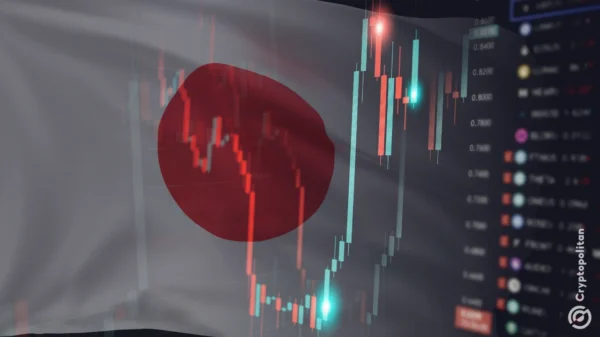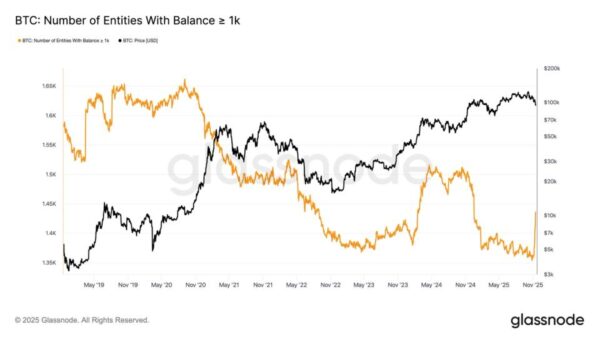Recent analysis from Ark Investment Management indicates a significant transformation in the ownership landscape of Bitcoin. As early adopters choose to cash out, institutional investors are stepping in to absorb the liquidity, creating a dynamic interplay between these two market forces.
According to research trading analyst David Puell, the price movements of Bitcoin in 2025 have been influenced by a “battle” between these long-time holders, often referred to as “whales,” and emerging institutional players. Puell noted that the increasing activity from early adopters has coincided with a notable uptick in the accumulation of Bitcoin by public companies and U.S. spot exchange-traded funds (ETFs), which have been actively purchasing the cryptocurrency.
In Ark Invest”s latest newsletter dated November 17, Puell highlighted a marked rise in Bitcoin”s “liveliness” metric, which assesses the frequency with which dormant coins are transacted on the blockchain. As of mid-November 2025, this metric reached 0.89, its highest since 2018, indicating that long-term holders are capitalizing on their investments at the fastest rate since 2021. The amount of stagnant Bitcoin in circulation decreased from 7.97 million BTC at the beginning of 2024 to 7.32 million BTC by November 15, 2025, reflecting heightened selling activity among these holders.
Simultaneously, institutional investment in Bitcoin has surged to unprecedented levels. The volume of BTC held in U.S. spot ETFs skyrocketed from zero at their launch in January 2024 to over 1.33 million BTC by mid-November 2025. Additionally, holdings by public companies increased from 271,996 BTC early in 2024 to 1.06 million BTC in November 2025. Collectively, ETF and corporate holdings have reached 2.39 million BTC, representing a substantial uptick of nearly 1.47 million BTC within a span of under two years.
Puell remarked, “While early adopters have distributed liquidity, institutional demand seems to have absorbed it.” This trend suggests a structural transfer of Bitcoin supply from long-term holders to institutional investors who view it as a legitimate asset class. Such a shift could significantly impact Bitcoin”s market dynamics and may contribute to reducing price volatility in the future.
Looking ahead, Ark Invest posits that the current liquidity environment could bolster continued accumulation by ETFs and corporate players, which may outweigh the selling pressure from early adopters. This trend could sustain the ongoing bull cycle into 2026, with institutional demand acting as a stabilizing force against profit-taking by long-term holders.
In summary, the data from Ark suggests a pivotal change in Bitcoin ownership, as a new class of investors emerges, potentially reshaping the market landscape for years to come.






































































